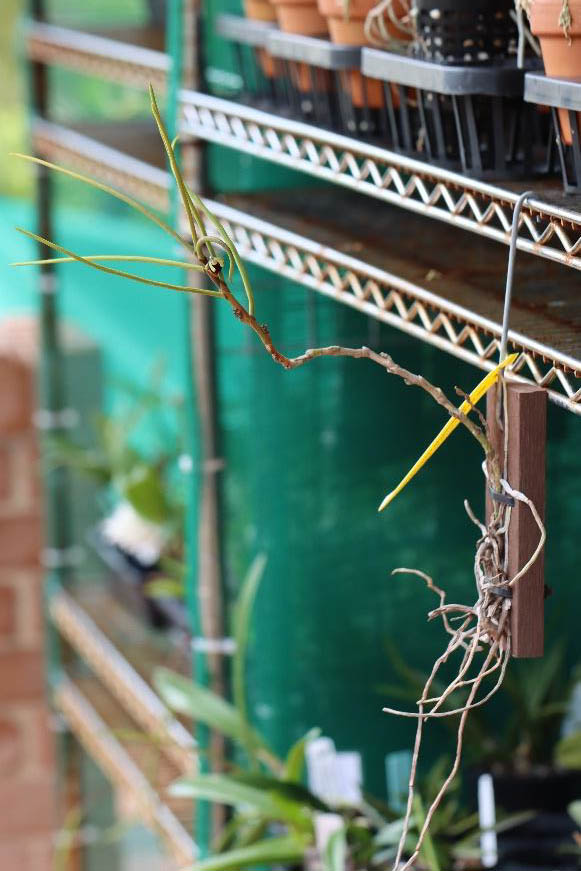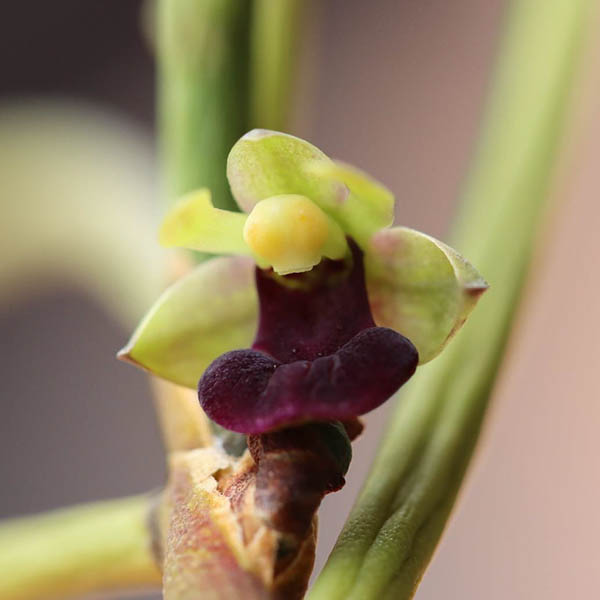by Warren Wilcox
This widely distributed orchid can be found from the eastern Himalayas through to the South-West Pacific on trees and rocks at altitudes of 40 to 900 metres: Chinese Himalayas, Assam, India, Sri Lanka, Bangladesh, eastern Himalayas, Nepal, western Himalayas, Andaman Islands, Myanmar, Thailand, Malaysia, Vietnam, Java, Lesser Sunda Islands, Moluccas, the Philippines, New Guinea, Solomon Islands, Northern Territory and Queensland Australia, Fiji, New Caledonia Samoa, Marianas, Vanuatu and Guam.
In Queensland, the orchid can be found on Cape York as far south as the Daintree River. The orchid has been found growing on rocks but is usually encountered on rough-barked trees, in well-lit rainforest. It is therefore no stranger to warm temperatures and humidity. Large plants form tangled masses that give similar visual impressions as large Plectorhizza orchids.
The velvet orchid was first formally described in 1786 by Georg Forster who gave it the name Epidendrum triste and published the description in Florulae Insularum Australium Prodromus. In 1890 Joseph Dalton Hooker changed the name to Luisia tristis. The specific epithet (tristis) is a Latin word meaning ‘sad’.
When I purchased my example of this plant it was labelled as Luisia teretifolia which this plant was regarded as in Queensland until 2019, at which time the Queensland Herbarium superseded the name to Luisia atacta (as named by DL Jones in 2006). Luisia teretifolia is now recognised as a different species with a native range limited to the Phillipines and Guam. It is important to note that the Royal Botanic Gardens at Kew recognizes Luisia atacta as a synonym of Luisia tristis, at the time of writing.

The orchid forms straggling or tangled clumps and has thick, flattened roots and wiry stems 100–400mm long and 1–3 mm wide. Between two and ten rigid, cylindrical leaves 50–200 mm long, 4–5mm wide are arranged along the stems 12–35 mm apart. Up to three green resupinate, star-like flowers 7–8 mm long and 9–11 mm wide form on flowering stems arising from leaf axils. The sepals are about 6 mm long, 2.5 mm wide and the petals are slightly longer but narrower. The labellum is dark red to dark maroon, about 7 mm (0.28 in) long and wide with three fleshy lobes. It has a velvety appearance which no doubt is the source of the orchids common name. Flowering is said to occur from November to April.


In my growing conditions
Fertilisation, fungal and insect treatments are the same as all my plants – nothing special. Supplemental watering in Spring, Summer and Autumn depends on weather conditions. In Winter, I reduce to regular misting only to keep the humidity up. In the future, I intend to return this plant to the same bush house as I keep my Dendrobium bigibbums as they enjoy similar ideal conditions.
A not so commonly kept Queenslander that should be part of more collections.

